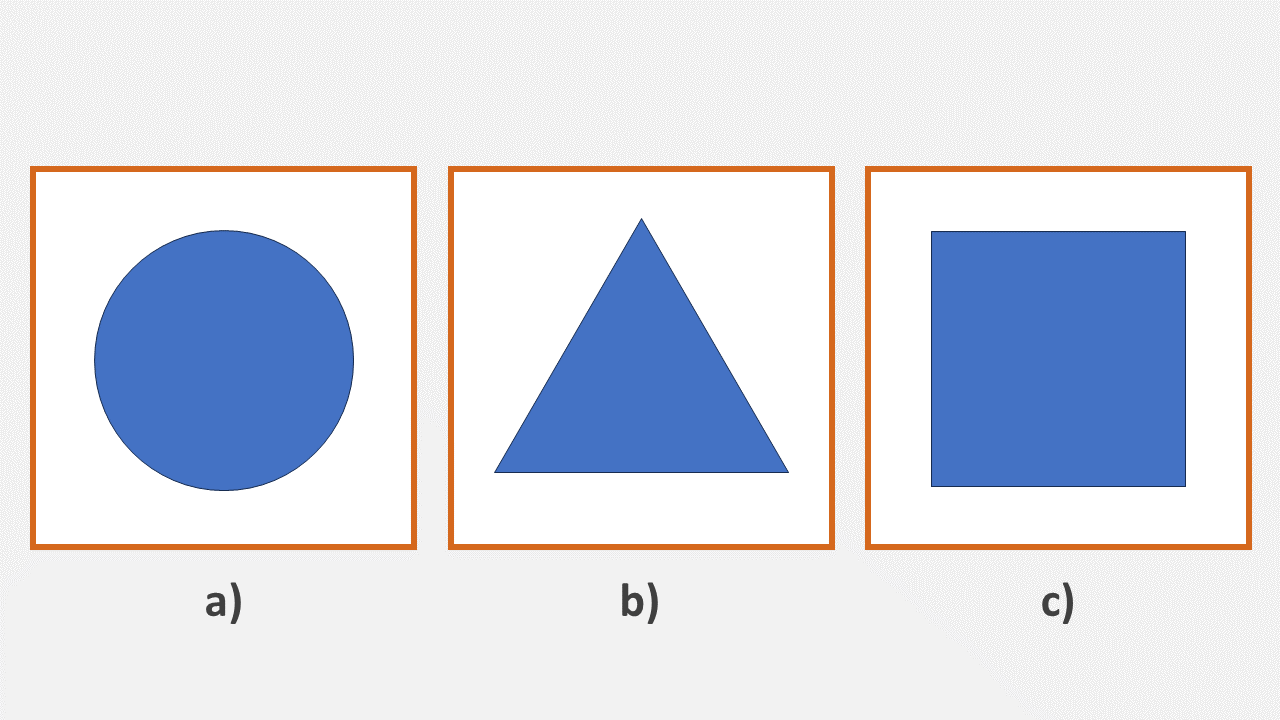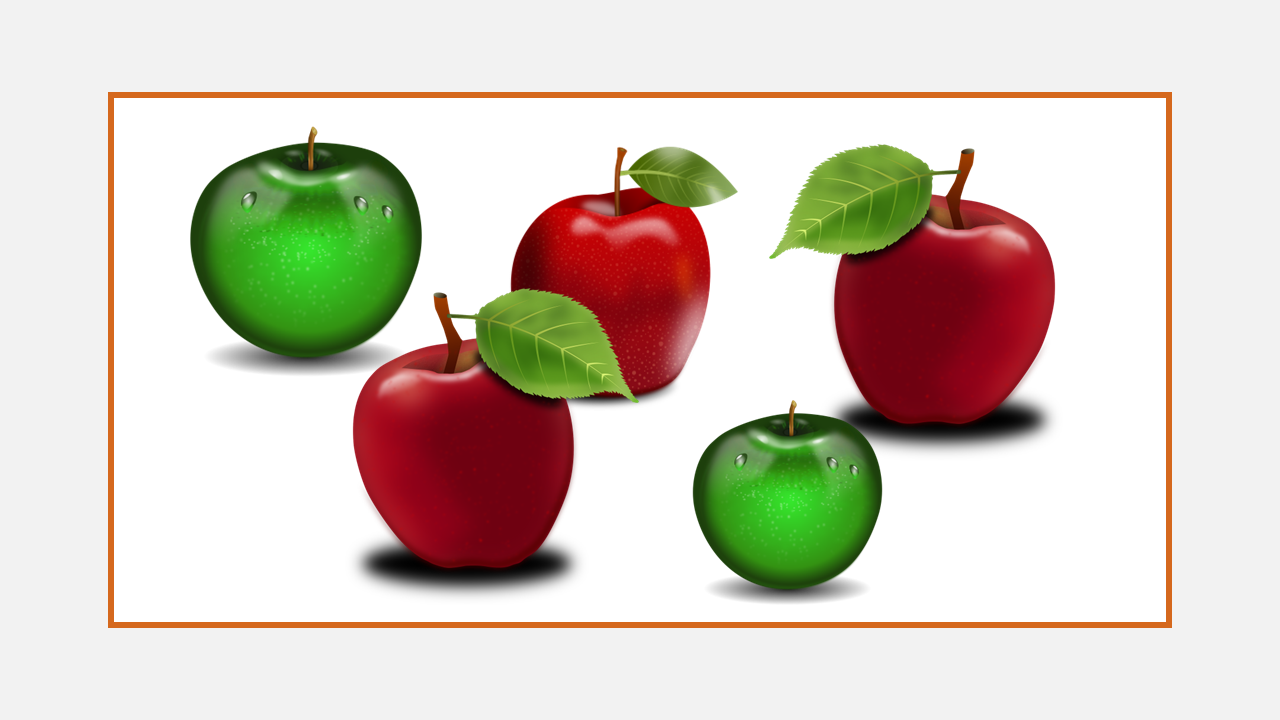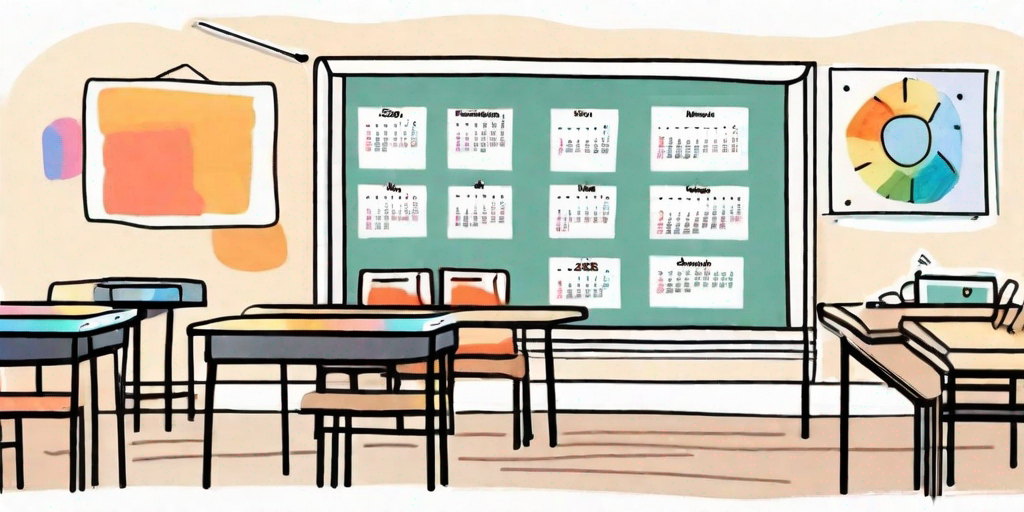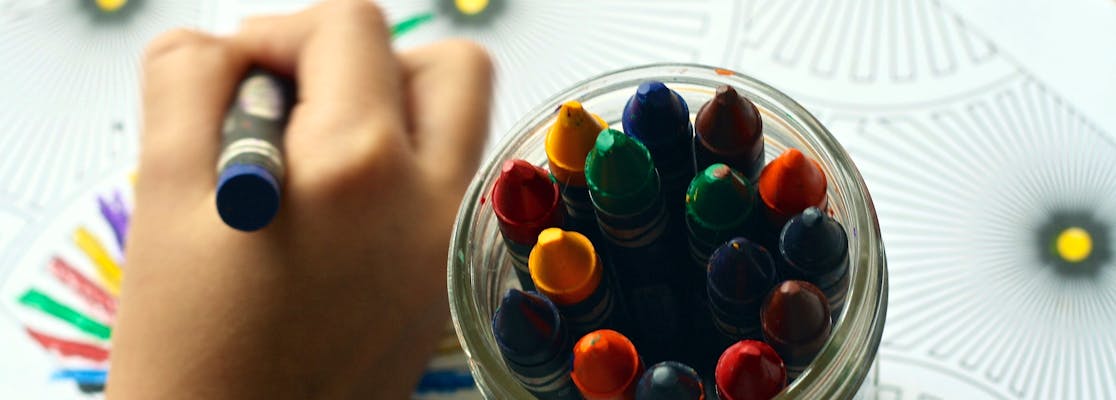MAP Kindergarten Test – A Complete Study Guide For Parents (2026)
Updated June 18, 2024
- What Is the MAP Test Kindergarten?
- What Happens in the Kindergarten MAP Assessment?
empty
empty
empty
empty
- Preparation Tips for MAP Kindergarten Mathematics
empty
empty
empty
empty
empty
- Sample MAP Test for Kindergarten: Example MAP Mathematics Questions
- Preparation Tips for MAP Kindergarten Reading
empty
empty
empty
empty
empty
- Sample MAP Test for Kindergarten: Example MAP Reading Questions
- How to Prepare Before Taking the Kindergarten MAP Growth Test
- Frequently Asked Questions
- Final Thoughts
The MAP Kindergarten Test is an important assessment that helps parents and educators gauge a child's learning progress.
By understanding the purpose, content and preparation strategies for this test, parents can support their child's academic growth.
In this study guide, we will delve into the details of the MAP Kindergarten Test, providing guidance, tips and examples to help parents navigate this assessment successfully.
Prepare for the MAP Kindergarten Test with TestPrep-Online
What Is the MAP Test Kindergarten?
The Measures of Academic Progress (MAP) Test is a computerized adaptive test designed to measure a student's knowledge and skills in various academic areas.
Specifically, the MAP Kindergarten Test focuses on mathematics and reading.
These two subjects form the foundation of a child's academic journey, and assessing their proficiency in these areas at an early stage can help identify areas of strength and areas that may require additional support.
When it comes to assessing a kindergartner's academic abilities, the MAP Test stands out as a reliable and comprehensive tool.
By using advanced computer algorithms, this test adapts to each student's individual responses, ensuring that the questions presented are tailored to their skill level.
It is important to note that the MAP Test Kindergarten is not meant to be a high-stakes assessment. Instead, it serves as a tool to inform instruction and guide educational decision-making.
By providing educators with a comprehensive picture of a kindergartner's abilities and growth, the MAP Test empowers them to tailor their teaching strategies to meet the unique needs of each student.
What Happens in the Kindergarten MAP Assessment?
The Kindergarten MAP Assessment consists of multiple-choice questions that adapt to the individual student's performance. As the child answers correctly, the questions become more challenging.
Similarly, if the child answers incorrectly, the Kindergarten MAP test questions become easier. This adaptive design ensures that each student receives an assessment that aligns with their ability level.
The MAP Assessment for Kindergarten covers essential concepts such as:
- Number sense
- Geometry
- Measurement
- Phonics
- Vocabulary
- Comprehension
By assessing these core areas, the MAP Test provides valuable insights into a child's mathematical and reading skills.
Number Sense
During the Kindergarten MAP Assessment, students are presented with various mathematical problems that test their understanding of number sense.
They may be asked to identify numbers, count objects or solve simple addition and subtraction problems. This helps teachers gauge their mathematical fluency and ability to apply basic concepts.
Geometry
In addition to number sense, the MAP Assessment also evaluates a child's understanding of geometry.
Students may encounter Kindergarten MAP test questions that require them to identify shapes, compare sizes or describe spatial relationships.
This helps assess their spatial reasoning and ability to recognize and manipulate geometric figures.
Measurement
Measurement is another crucial area covered in the Kindergarten MAP Assessment. Students may be asked to compare lengths, identify units of measurement or estimate quantities.
This assesses their ability to use measurement tools and understand the concept of size and quantity.
Phonics, Vocabulary and Comprehension
Phonics, vocabulary and comprehension are also assessed during the Kindergarten MAP Assessment.
Students may be presented with reading passages or word problems that require them to apply their phonetic knowledge, understand word meanings and demonstrate reading comprehension skills.
This helps teachers identify areas where students may need additional support in their literacy development.
Preparation Tips for MAP Kindergarten Mathematics
Preparing your child for the MAP Kindergarten Mathematics Test can help them feel more confident and perform their best.
Here are some helpful tips to support your child's mathematical preparation for the NWEA Kindergarten assessment:
Engage in Everyday Math Activities, Such as Counting Objects, Recognizing Shapes and Sorting Items
One way to engage your child in everyday math activities is by incorporating math into their daily routines.
For example, during breakfast, you can ask your child to count the number of cereal pieces in their bowl or identify the shapes of their toast.
While grocery shopping, you can involve your child by asking them to help you count the number of apples you need or identify the different shapes of the fruits and vegetables you are buying.
These simple activities not only make math fun but also help your child develop their number sense and shape recognition skills.
Read Math-Related Books Together, Fostering a Love for Numbers and Patterns
Reading math-related books with your child is a great way to foster a love for numbers and patterns. Look for books that introduce mathematical concepts in a fun and engaging way.
For example, you can read books that involve counting, such as 'Ten Little Ladybugs' or 'One Duck Stuck'. These books not only teach counting but also incorporate rhymes and repetition, making them enjoyable for young children.
Additionally, you can explore books that introduce patterns, such as 'Pattern Fish' or 'A-B-A-B-A- A Book of Pattern Play'. These books not only help your child recognize and create patterns but also enhance their critical thinking skills.
Play Math Games or Use Educational Math Apps That Align With the Kindergarten Curriculum
Playing math games or using educational math apps can make learning math more interactive and enjoyable for your child. Look for games or apps that align with the kindergarten curriculum and cover the math concepts tested in the MAP Assessment.
For example, you can play games that involve counting, such as Counting Cookies or Number Bingo. These games not only reinforce counting skills but also help your child develop their number recognition.
Additionally, you can explore apps that focus on shape recognition, such as Shape Builder or Shape Sorter. These apps not only teach your child about different shapes but also enhance their spatial reasoning abilities.
Encourage Problem-Solving and Critical Thinking Skills Through Puzzles and Logical Reasoning Exercises
Encouraging problem-solving and critical thinking skills is essential for your child's mathematical development. Engage your child in puzzles and logical reasoning exercises that challenge their thinking and problem-solving abilities.
For example, you can give them age-appropriate puzzles, such as jigsaw puzzles or Sudoku puzzles, that require them to think logically and find solutions.
You can also provide them with simple math word problems and ask them to come up with strategies to solve them.
These activities not only develop their problem-solving skills but also enhance their logical reasoning abilities, which are crucial for success in mathematics.
Communicate With Your Child’s Teacher
Communicate with your child's teacher to understand the specific math concepts covered in the MAP Assessment and focus on those areas during your preparation.
Reach out to your child's teacher and ask for any study materials or resources that can help you in your preparation.
Additionally, you can discuss with the teacher any areas where your child may need additional support or MAP test practice for Kindergarten. By working together with the teacher, you can ensure that your child is well-prepared for the MAP Kindergarten Mathematics Test.
Sample MAP Test for Kindergarten: Example MAP Mathematics Questions
To provide a better understanding of the MAP Kindergarten Mathematics Test, here are a few example NWEA Kindergarten practice test questions:
1. Which shape has three straight sides?

2. What number comes after 10?
a) 12
b) 10
c) 9
d) 11
3. Count the number of apples:

Preparation Tips for MAP Kindergarten Reading
Enhancing your child's reading skills is crucial for their success in the MAP Kindergarten Reading Test.
Consider the following tips to support their reading preparation:
Read Aloud to Your Child Frequently, Exposing Them to a Variety of Literature and Vocabulary
Reading aloud to your child is not only a great bonding activity, but it also helps develop their listening skills and expands their vocabulary.
When you read to them, choose a variety of books that expose them to different genres, such as fiction, non-fiction, poetry and fairy tales.
This will help them develop a love for reading and expose them to different writing styles.
Engage in Conversations About the Stories You Read Together, Discussing Characters, Plot and Main Ideas
Engaging in conversations about the stories you read together is an important way to enhance your child's reading comprehension.
Ask them questions about the characters, the plot and the main ideas of the story.
This will not only help them understand the story better but also encourage critical thinking skills.
Encourage Your Child to Retell Stories or Create Their Own Using Drawings or Imaginative Play
Encouraging your child to retell stories or create their own using drawings or imaginative play is a fun and creative way to enhance their reading skills.
This activity helps them understand the structure of a story, develop their storytelling abilities and improve their vocabulary.
It also boosts their confidence in expressing themselves and encourages their imagination to flourish.
Practice Phonics and Letter Recognition Through Flashcards or Interactive Learning Activities
Practicing phonics and letter recognition is essential for building a strong foundation in reading. Flashcards are a great tool to help your child recognize letters and their corresponding sounds.
You can make flashcards with uppercase and lowercase letters and practice saying the letter sound together.
Interactive learning activities, such as online games or educational apps, can also make learning phonics and letter recognition enjoyable for your child.
Expose Your Child to Early Literacy Skills Such as Rhyming, Letter Sounds and Sight Word Recognition
Early literacy skills, such as rhyming, letter sounds and sight word recognition, play a crucial role in your child's reading development.
Rhyming activities, such as reading rhyming books or playing rhyming games, help your child recognize patterns in language and develop phonological awareness.
Letter sound activities, such as matching letters to their sounds or playing letter sound games, help your child understand the relationship between letters and their sounds.
Sight word recognition activities, such as using flashcards or playing sight word games, help your child quickly recognize common words by sight, which improves their reading fluency.
By following these tips and incorporating them into your child's daily routine, you can help them build a strong foundation in reading and prepare them for success in the MAP Kindergarten Reading Test.

If you want 12-month access to all the practice resources for this test, our partner TestPrep-Online.com offers a Family Membership.
Family Membership gives you access to all the TestPrep-Online resources for the next 12 months. You will also get two separate accounts, which can be very helpful if you have two children preparing for their tests.
Get a Family Membership with 12-Month Access
Sample MAP Test for Kindergarten: Example MAP Reading Questions
Here are a few example NWEA Kindergarten practice test questions that demonstrate the type of content your child may encounter in the MAP Kindergarten Reading Test:
1. Which word rhymes with 'cat'?
a) dog
b) hat
c) ball
2. Read the short story:
Tommy woke up early in the morning. He brushed his teeth, put on his favorite red shirt, and then had breakfast with his family. After breakfast, he went to school.
What happened first in the story?
a) Tommy went to school.
b) Tommy brushed his teeth.
c) Tommy had breakfast with his family.
d) Tommy put on his favorite red shirt.
3. Read the sentence:
The sun is _______.
Choose the correct word to complete the sentence:
a) hot
b) big
c) red
As you can see, the MAP Kindergarten Reading Test covers various aspects of reading comprehension and language development.
By engaging with these types of Kindergarten MAP Reading Test practice questions, your child can enhance their reading skills and improve their overall literacy abilities.
How to Prepare Before Taking the Kindergarten MAP Growth Test
Prior to your child taking the Kindergarten MAP Growth Test, it's important to keep a few key points in mind:
- Ensure your child gets sufficient rest and a healthy breakfast on the day of the assessment.
- Reassure your child that the MAP Test is not a measure of their worth or intelligence, but rather an opportunity to show what they have learned.
- Avoid placing undue pressure on your child and instead, focus on providing support and encouragement.
- Remain engaged with your child's academic progress throughout the school year, not just during the testing period.
Preparing your child for the Kindergarten MAP Growth Test involves more than just the day of the assessment.
While making use of NWEA Kindergarten MAP practice test questions is certainly useful, preparation requires a holistic approach that takes into account their overall well-being and educational journey.
By following these additional tips, you can help your child feel confident and prepared:
Step 1. Establish a Consistent Routine
Maintaining a consistent daily routine can help your child develop good habits and reduce anxiety.
Make sure they have a regular bedtime and wake-up time to ensure they get enough rest before the test.
Step 2. Encourage Healthy Habits
A healthy body supports a healthy mind. Provide your child with nutritious meals and snacks leading up to the test.
Avoid sugary foods and drinks that can cause energy crashes and affect concentration.
Step 3. Foster a Love for Learning
Help your child develop a positive attitude towards learning by engaging in educational activities together.
Read books, explore nature and encourage curiosity. When children enjoy the learning process, they are more likely to feel motivated and confident during assessments.
Step 4. Communicate With Teachers
Stay in touch with your child's teacher throughout the school year. Regular communication allows you to stay informed about your child's progress and address any concerns or areas that may need additional support.
Teachers can provide valuable insights and resources to help your child succeed.
Step 5. Create a Supportive Environment
Surround your child with a supportive and encouraging environment. Celebrate their achievements, no matter how small, and provide constructive feedback when needed.
Let them know that mistakes are part of the learning process and that their effort is what truly matters.
Step 6. Practice, but Keep It Fun
Familiarize your child with the format and types of questions they may encounter in the MAP Growth Test. Trying a sample MAP test for Kindergarten can help with this.
However, it's important to keep practice sessions enjoyable and stress-free. Use games, puzzles or interactive activities to make learning engaging and exciting.
Remember, the Kindergarten MAP Growth Test is just one snapshot of your child's progress.
It's essential to focus on their overall growth and development, rather than placing too much emphasis on a single assessment.
By providing a nurturing and supportive environment, you can help your child thrive academically and emotionally.
Yes, with permission from the school, parents can receive a detailed report of their child's performance.
The frequency of the test administration is determined by the school or district. It is typically given once or twice a year to track a child's growth.
Yes, the test results provide valuable insights for teachers, allowing them to tailor instruction to meet the specific needs of each student.
A good MAP score for Kindergarten typically falls within the range of 160 to 180.
MAP testing in Kindergarten is a form of assessment that measures a child's academic progress and growth throughout the school year in various subjects like math, reading and language usage.
Kindergarteners can benefit from taking MAP tests as they provide valuable insights into their academic strengths and areas needing improvement. Making use of free Kindergarten MAP test practice questions can help prepare them for the tests.
Your child's MAP score indicates their current level of academic achievement and growth compared to other students nationally.
A gifted score on the MAP test often falls above the 90th percentile, indicating exceptional academic performance and potential.
The RIT score for Kindergarten refers to the RIT (Rasch Unit) scale, which measures a student's academic achievement and growth on the MAP test.
A good score on the MAP test varies depending on the grade level and subject, but generally, scores above the national average or in the 50th percentile or higher are considered favorable for students. Practicing with Kindergarten MAP test sample questions can help young children prepare.
Final Thoughts
The MAP Kindergarten Test is a valuable tool that offers parents a comprehensive understanding of their child's academic progress.
By understanding the purpose, content and preparation strategies for this assessment, parents can support their child's success.
By fostering a positive attitude towards learning, engaging in meaningful preparation activities and MAP test practice for Kindergarten, as well as maintaining open communication with educators, parents can enhance their child's experience with the MAP Kindergarten Test.



